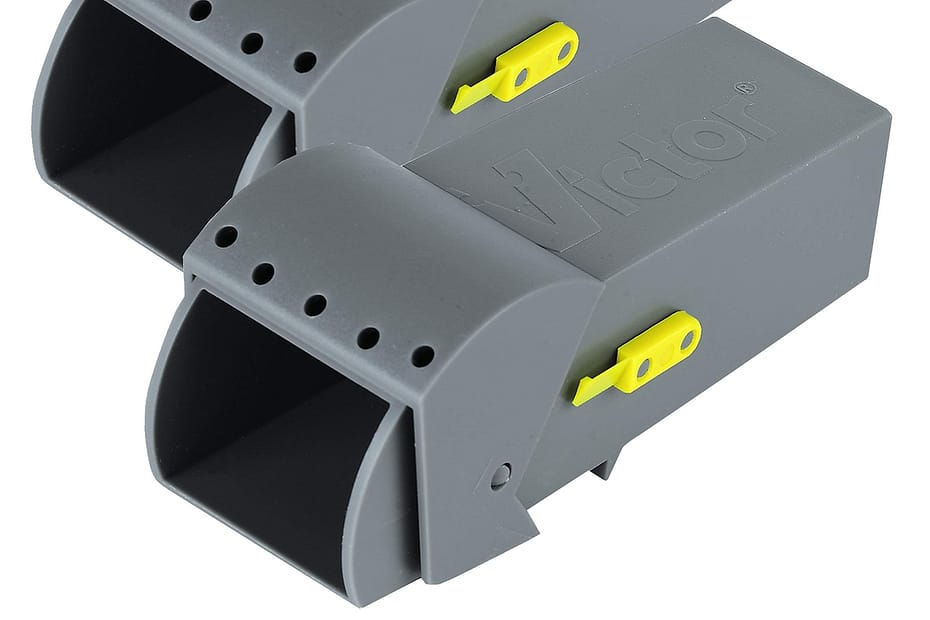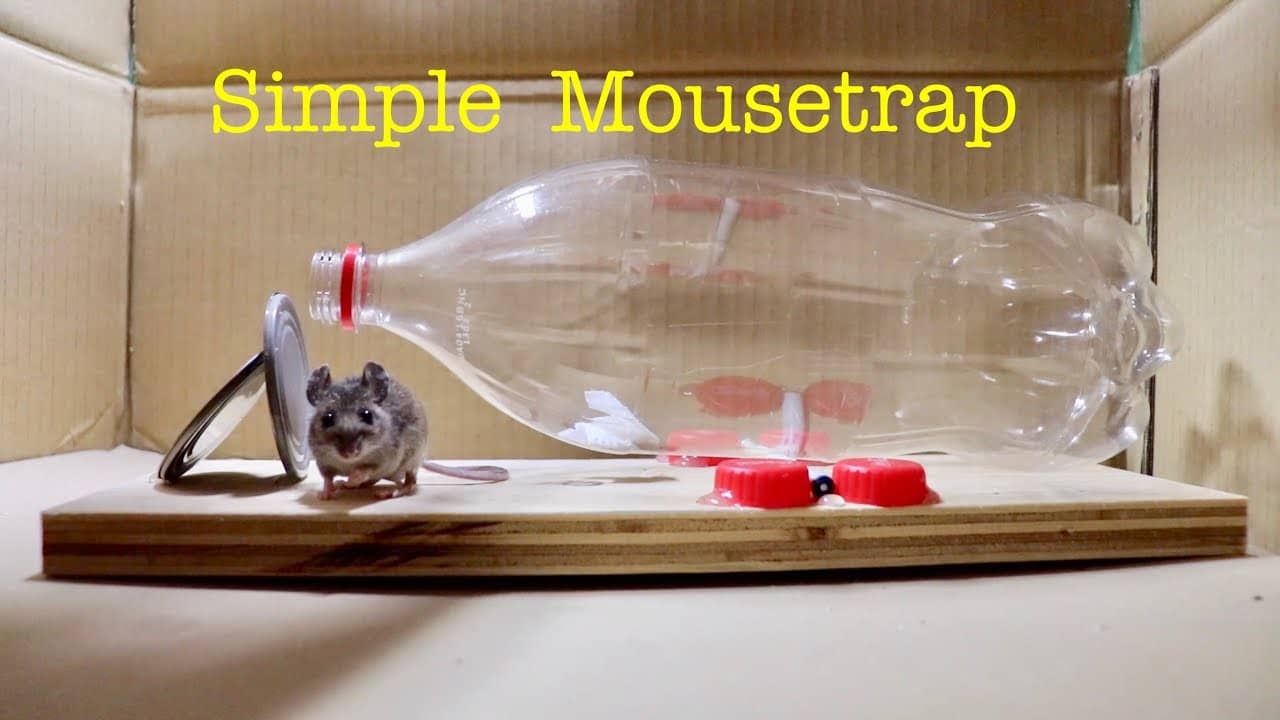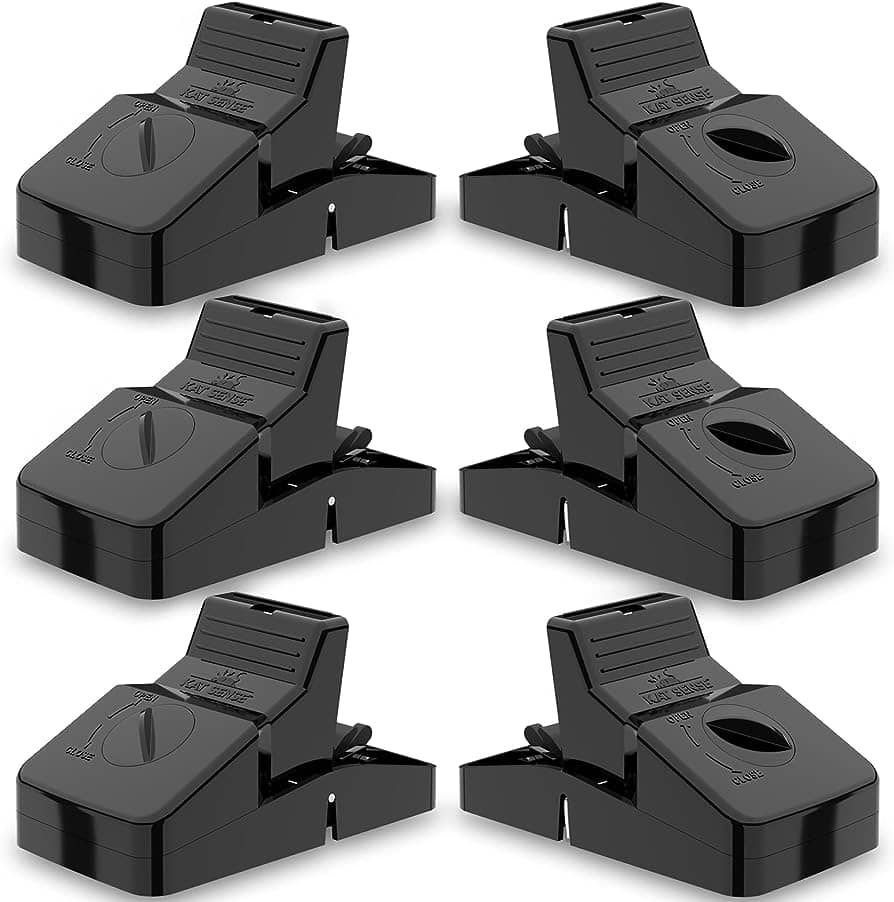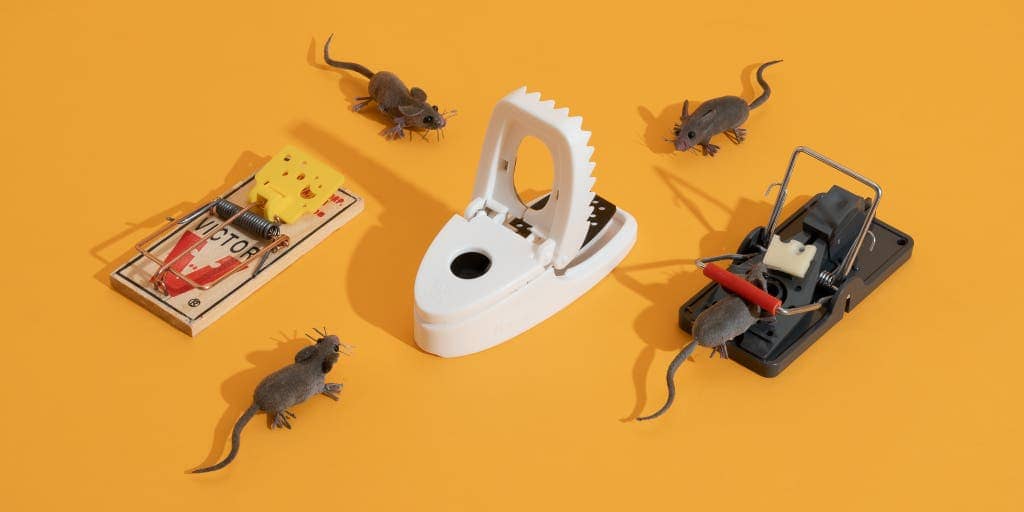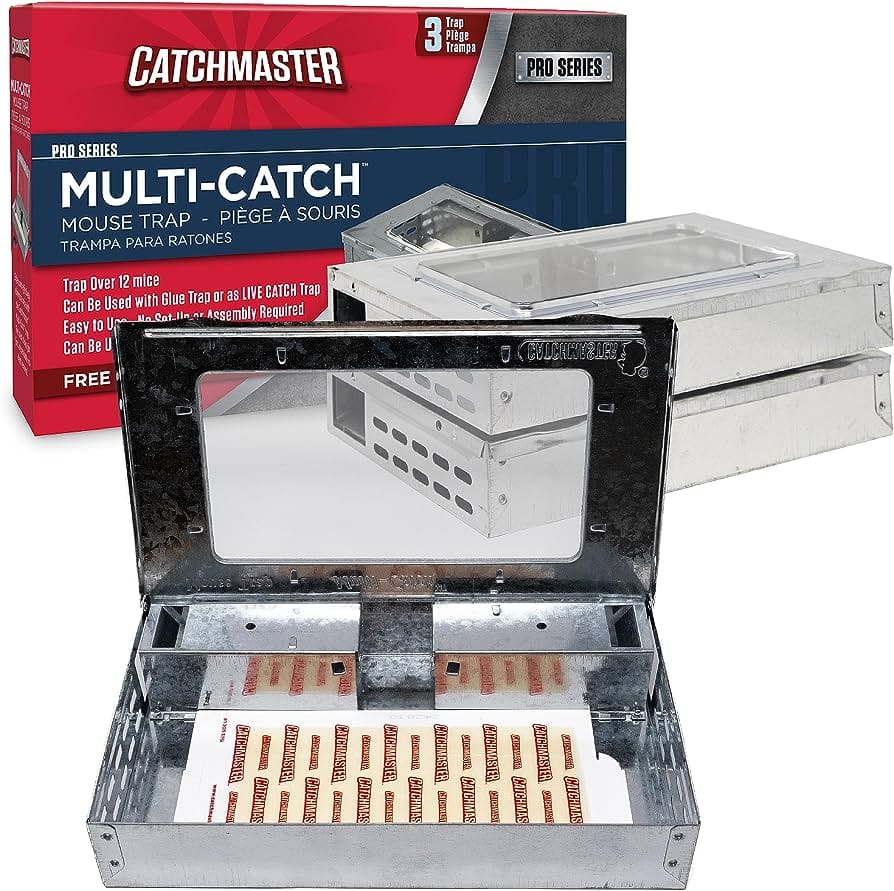To set up a live catch mouse trap, place bait inside the trap and position it along walls or pathways commonly used by mice. The trap should be checked regularly to remove captured mice and prevent harm to them.
We will provide a step-by-step guide on setting up a live catch mouse trap and offer some tips to ensure success. By following these instructions, you can effectively and humanely control mouse infestations in your home or workplace.
Choosing The Right Live Catch Mouse Trap
Setting up a live catch mouse trap requires choosing the right one. Find out how to set up a live catch mouse trap effectively and safely.
While dealing with a mouse infestation, it is important to choose the right live catch mouse trap to effectively address the problem. This subheading will explore different types of live catch mouse traps, the best options for different situations, and the factors to consider when selecting one.
Types Of Live Catch Mouse Traps:
- Multiple Catch Mouse Traps:
- These traps are designed to capture multiple mice in one go, making them suitable for moderate to severe infestations.
- They usually have a tunnel-like structure with entry points on both ends, enticing mice to enter and get trapped.
- Ideal for areas with high mouse activity such as basements, attics, and storage rooms.
- Single Catch Mouse Traps:
- As the name suggests, these traps are designed to catch one mouse at a time.
- They are a suitable choice for low to moderate mouse infestations.
- Single catch traps are available in various forms, including cage traps and clear plastic containers.
Best Live Catch Mouse Traps For Different Situations:
- Large-Infestation Situations:
- Multiple catch mouse traps are recommended for large infestations, effectively capturing multiple mice in one setting.
- Snap traps and glue traps can also be considered as they are highly efficient in dealing with extensive mouse problems.
- Small-Infestation Situations:
- For small infestations or occasional mice sightings, single catch mouse traps can be practical.
- Humane traps, such as clear plastic containers with a one-way entry, allow for safe release of the captured mouse back into the wild.
Factors To Consider When Choosing A Live Catch Mouse Trap:
- Size and Design:
- Consider the size of the trap, ensuring it can accommodate the type and number of mice you are dealing with.
- Look for a design that provides easy entry but restricts escape once the mouse is caught.
- Humane Approach:
- If your aim is to release mice back into their natural habitat unharmed, opt for humane live catch traps.
- Ensure the trap does not cause unnecessary harm or stress to the mouse during capture or release.
- Durability and Reusability:
- Look for sturdy traps made of durable materials to ensure longevity and repeated use.
- Consider traps that are easy to clean and maintain for future use.
- Safety:
- Prioritize safety when selecting a live catch trap, especially if there are children or pets in the vicinity.
- Choose traps that have secure locking mechanisms or protective shields to prevent accidental contact.
- Ease of Use:
- Opt for traps that are easy to set up and bait, reducing the hassle of trap preparation.
- Look for traps with simple release mechanisms, allowing for quick and safe disposal of captured mice.
By considering the types of live catch mouse traps available, choosing the best option for your situation, and evaluating essential factors, you can effectively select the right live catch mouse trap for your needs. Remember to carefully follow the instructions provided with the trap to maximize its efficiency and ensure a humane approach to dealing with mouse infestations.
Preparing Your Live Catch Mouse Trap
To successfully set up a live catch mouse trap, ensure you follow these steps: select an appropriate location, bait the trap with an enticing treat, set the trap in a strategic position, check it regularly, and release any captured mice far away from your home.
By carefully following these guidelines, you can effectively catch and release mice without harm.
When it comes to setting up a live catch mouse trap, proper preparation is key to your success. In this section, we will discuss three important factors to consider: selecting the right bait, proper trap placement, and creating an enticing environment for mice to enter.
Selecting The Right Bait For Your Live Catch Mouse Trap:
To increase the chances of successfully catching mice, it’s essential to use the right bait that will attract them to the trap. Here are some effective options:
- Peanut butter: Mice are known to be attracted to the smell and taste of peanut butter. Smear a small amount on the trigger or inside the trap to entice them.
- Cheese: While it may be a classic choice, not all mice are necessarily drawn to cheese. However, it’s still worth trying as some individuals may find it irresistible.
- Nutella or chocolate: The sweet scent of Nutella or chocolate can also attract mice to the trap. Apply a tiny amount to the trigger area.
Remember, mice have different taste preferences, so it might be beneficial to experiment with different baits to see which one works best for you.
Proper Placement Of The Live Catch Mouse Trap:
Once you’ve selected the bait, the next step is to place the trap properly. Consider the following guidelines for optimal trap placement:
- Identify high-activity areas: Look for signs of mouse activity such as droppings or chew marks. These areas, including along walls or near food sources, are ideal for placing the trap.
- Position the trap perpendicular to the wall: Mice often travel along the sides of walls, so placing the trap perpendicular to the wall can increase the chances of them entering it.
- Block off escape routes: To prevent mice from escaping, ensure there are no obstructions or open spaces around the trap.
By following these placement tips, you can maximize the effectiveness of your live catch mouse trap.
Creating An Enticing Environment For Mice To Enter The Trap:
To attract mice into the trap, it’s important to make the environment as enticing as possible. Consider the following suggestions:
- Remove competing food sources: Mice are more likely to enter the trap if there are no other easily accessible food options nearby. Keep all food stored securely to eliminate competition.
- Use caution with strong odors: While strong-smelling baits can be effective, be cautious about other odors that may deter mice. Avoid using strong cleaning agents or other repellents in the trap’s vicinity.
- Ensure the trap is clean and undamaged: Mice may be wary of traps that are dirty or damaged. Regularly clean and inspect the trap to ensure it is in good working condition.
By creating an environment that is enticing and free from deterrents, you can improve the chances of mice entering the trap and being caught.
Remember, each of these factors plays a crucial role in setting up your live catch mouse trap effectively. Select the right bait, place the trap in strategic locations, and create an environment that entices mice to enter. With these steps in mind, you’ll be on your way to managing your mouse problem efficiently and ethically.
Setting Up Your Live Catch Mouse Trap
Setting up your live catch mouse trap is easy with these simple steps. Just follow the instructions provided, place the trap in strategic locations, and release the captured mouse safely outside.
Setting up a live catch mouse trap is an effective and humane way to deal with unwanted rodents in your home. By using this type of trap, you can safely catch the mice without causing them harm, allowing you to release them back into the wild.
Follow these step-by-step instructions to assemble your live catch mouse trap and ensure that it is secure and functional.
Step-By-Step Guide To Assembling The Live Catch Mouse Trap:
- Select a suitable location: Choose an area where you have noticed mouse activity, such as along walls or in corners.
- Position the trap: Place the live catch mouse trap against the wall with the entrance facing outward.
- Bait the trap: Apply a small amount of bait, such as peanut butter or a piece of cheese, inside the trap to attract the mice.
- Set the trap door: Make sure the trap door is open and ready for the mice to enter.
- Place the trap carefully: Ensure that the trap is stable and won’t tip over easily, as this could scare away the mice.
- Check the trap regularly: Monitor the trap regularly to see if any mice have been caught.
Ensuring The Trap Is Secure And Functional:
- Inspect the trap: Before setting up the trap, ensure that all parts are present and in good condition.
- Secure the trap door: Make sure the trap door closes securely after the mouse enters, preventing its escape.
- Test the trap: Before leaving the trap unattended, test it to ensure that it functions properly.
- Adjust the sensitivity: If the trap seems too sensitive or not sensitive enough, adjust the trigger mechanism according to the manufacturer’s instructions.
Tips For Making The Trap More Effective:
- Use the right bait: Experiment with different types of baits, such as chocolate or dried fruit, to see which attract the mice best.
- Place multiple traps: If you have a severe mouse problem, consider setting up multiple traps to increase your chances of catching them.
- Clear the surroundings: Remove any potential obstacles or distractions near the trap, as this could discourage the mice from entering.
- Regularly check and empty the trap: Empty and reset the trap promptly after catching a mouse to ensure a continuous trapping process.
Remember, it’s essential to release any caught mice back into the wild far away from your home to prevent them from returning. Setting up a live catch mouse trap not only helps you eliminate mouse infestations but also ensures the safety and well-being of these small creatures.
Checking And Maintaining Your Live Catch Mouse Trap
Ensure the effectiveness of your live catch mouse trap by regularly checking and maintaining it. By following these simple steps, you can successfully set up and monitor your trap, preventing unwanted pests from infesting your home.
Setting up a live catch mouse trap is an effective and humane way to deal with those pesky rodents. After successfully installing your trap, it’s important to regularly check and maintain it to ensure its efficiency. Here’s what you need to know:
How Often To Check The Trap For Captured Mice
- Check the trap at least once a day to minimize mice’s stress and avoid potential harm.
- For highly infested areas, consider checking the trap twice a day for quicker removal.
Safely Releasing The Mice From The Trap
- Wear gloves to minimize contact with the mice and to protect yourself from any potential diseases they may carry.
- Take the trap to a suitable location outside, at least 100 feet away from your property, to prevent the mice from finding their way back inside.
- Open the trap door and give the mice a chance to exit naturally. Do not forcefully remove them.
Cleaning And Maintaining The Live Catch Mouse Trap
- Use mild soap and warm water to clean the trap thoroughly after each release.
- Ensure there are no lingering food or scent traces that might deter mice from entering the trap.
- Inspect the trap for any damages or wear and tear, and make necessary repairs or replacements to maintain its effectiveness.
Remember, the live catch mouse trap provides a humane way to tackle your mouse problem. By regularly checking the trap, safely releasing the mice, and maintaining the trap’s cleanliness and functionality, you can effectively control the mouse population without causing harm.
Happy trapping!
Troubleshooting Common Issues With Live Catch Mouse Traps
Learn how to effectively set up live catch mouse traps and troubleshoot common issues. These tips will help you get rid of unwanted pests without harming them.
If you’re using a live catch mouse trap and encountering some issues, don’t worry! Here are some common problems that you might be facing and their possible solutions:
Mice Not Being Attracted To The Trap:
- Inspect the bait: Ensure that the bait you’re using is fresh and appealing to mice. Consider using highly enticing options like peanut butter, chocolate, or small bits of cheese.
- Placement matters: Make sure you’re placing the trap in areas where mice are known to frequent, such as along walls or near entry points.
- Experiment with different locations: If you notice that mice are not being attracted to a specific area, try moving the trap to a different spot.
- Increase visibility: Mice are more likely to approach the trap if they can easily spot it. Try placing some attractants near the trap, like small food scraps, to gain their attention.
Trap Not Capturing Mice Effectively:
- Check the trigger mechanism: Ensure that the trap is properly set and the trigger mechanism is working correctly. If the trap is a humane catch and release type, make sure the door is closing securely.
- Use multiple traps: Consider placing multiple traps in different areas to increase your chances of capturing the mice.
- Pre-bait the trap: If you notice that mice are avoiding the trap, try pre-baiting it without setting it. This allows the mice to get comfortable with the trap and increases the likelihood of trapping them.
Dealing With Mice Escaping From The Trap:
- Seal any escape routes: Inspect the area around the trap and seal any gaps or openings that mice could use to escape.
- Use a larger trap: If the mice are consistently escaping, it’s possible that the trap you’re using is too small. Consider opting for a larger trap to prevent their escape.
- Handle with care: When releasing captured mice, make sure to handle the trap gently and at a safe distance from your home. Avoid any sudden movements that may startle the mice.
Remember, successful mouse trapping requires patience and perseverance. Keep experimenting with bait options, trap placement, and techniques until you find what works best for your situation.

Credit: m.youtube.com
Ethical And Humane Considerations When Using Live Catch Mouse Traps
Set up an ethical and humane live catch mouse trap by following these steps: choose the appropriate trap size, bait it with peanut butter or chocolate, place it near the mouse’s access point, and check it regularly to release any captured mice in a safe location away from your home.
This method ensures a humane approach to pest control while prioritizing the mouse’s welfare.
The Importance Of Humane Pest Control Methods
- Using humane pest control methods is not only ethically responsible but also helps maintain a sense of compassion and empathy towards all creatures, no matter how small.
- Ethical considerations play a vital role in shaping our approach to pest control, and it is important to prioritize methods that prioritize the well-being of both humans and animals.
- By opting for humane pest control methods, such as live catch mouse traps, we can effectively tackle the issue of mice infestation while minimizing harm and suffering.
How Live Catch Mouse Traps Help Prevent Harm To Mice
- Live catch mouse traps are designed to capture mice without causing them harm, providing a safer alternative to traditional snap or glue traps.
- These traps are specifically designed to capture mice unharmed, allowing for their later release into a suitable environment.
- By using live catch mouse traps, we can avoid causing unnecessary pain and suffering to these small creatures, while still effectively addressing the issue of mice infestation.
Creating A Safe And Healthy Living Environment For Mice
- Building a safe and healthy living environment for mice is essential in order to foster their well-being without compromising the comfort of our own living spaces.
- Providing appropriate shelter that is secure, warm, and free of external threats is crucial for the mice’s survival and overall health.
- Ensuring the availability of food and water sources that are easily accessible to the mice helps meet their basic needs and promotes a better quality of life.
- Regularly inspecting and sealing any potential entry points can help prevent mice from entering our living spaces, thus minimizing the need for pest control measures altogether.
Remember, the welfare of both humans and animals is of utmost importance when it comes to pest control. By embracing humane methods, such as live catch mouse traps, we can effectively address the issue of mice infestation while promoting compassion and empathy towards these small creatures.
Creating a safe and healthy living environment for mice ensures their well-being and reduces the likelihood of future infestations. Let us prioritize the ethical and humane approach to pest control, making the world a better place for both humans and animals alike.
Alternative Pest Control Methods For Mice Infestations
Looking to deal with a mouse infestation? Learn how to effectively set up a live catch mouse trap, an alternative pest control method that is humane and environmentally friendly. Protect your home without causing harm to these small critters.
Mice infestation can be a nuisance in your home, and finding the most effective way to eliminate these pests requires careful consideration. While traditional snap traps are commonly used, there are alternative methods such as live catch mouse traps that offer a more humane approach.
In this section, we will compare live catch mouse traps to other pest control options, discuss their pros and cons, and help you choose the most suitable approach for your situation.
Comparing Live Catch Mouse Traps To Other Pest Control Options
When it comes to mouse control, there are several methods available. Let’s take a closer look at the different options:
- Live catch mouse traps:
- These traps allow you to catch mice alive without causing harm to them.
- Once caught, you can release the mice outside your home, far away from your property.
- Live catch traps are relatively easy to set up and can catch multiple mice.
- However, it’s important to check the trap frequently and release the mice promptly to ensure their well-being.
- Snap traps:
- Snap traps are the traditional, spring-loaded traps that quickly kill mice upon activation.
- These traps are inexpensive and readily available.
- However, they can be dangerous if accidentally activated by children or pets.
- Additionally, snap traps require regular disposal and cleaning, which can be unpleasant.
- Glue traps:
- These traps consist of a sticky surface that captures mice when they step on it.
- Glue traps are easy to use and inexpensive.
- However, they are considered inhumane as mice often suffer before dying.
- Removing a captured mouse from a glue trap can be distressing.
- Electronic traps:
- These traps use batteries or electricity to quickly kill mice upon contact.
- They are easy to set up and require minimal effort.
- Nevertheless, electronic traps can be more expensive than other options.
- Additionally, they may not be suitable for households with small children or pets.
Pros And Cons Of Different Methods
To summarize, each pest control method has its own advantages and disadvantages:
- Live catch mouse traps:
- Pro: Humane approach, allowing mice to be released alive.
- Con: Requires frequent checking and immediate release of caught mice.
- Snap traps:
- Pro: Inexpensive and readily available.
- Con: Can be dangerous and require regular disposal and cleaning.
- Glue traps:
- Pro: Easy to use and inexpensive.
- Con: Considered inhumane, difficult to remove a captured mouse.
- Electronic traps:
- Pro: Quick and efficient, minimal effort required.
- Con: More expensive and may not be suitable for households with children or pets.
Choosing The Most Suitable Approach For Your Situation
When deciding on the best pest control method for your mice infestation, consider the following factors:
- Humaneness: If you prefer a humane approach and want to release mice unharmed, live catch mouse traps are the way to go.
- Safety: If you have small children or pets, it’s crucial to choose a method that avoids any potential harm, such as snap traps.
- Ease of use: Consider the level of effort required to set up and maintain different traps. Electronic traps offer convenience, while live catch traps need frequent monitoring.
- Budget: Evaluate the cost of each option and determine what fits within your budget.
By considering these factors and weighing the pros and cons of each method, you can select the most suitable approach to effectively control mice infestations in your home.
Frequently Asked Questions Of How To Set Up A Live Catch Mouse Trap
Do You Put Bait In A Live Mouse Trap?
Yes, you should put bait in a live mouse trap to attract and catch the mouse.
How Do You Set A Catch And Release Mouse Trap?
To set a catch and release mouse trap, follow these steps carefully: 1. Open the trap and place bait at the designated spot. 2. Position the trap against a wall, ensuring the entrance faces the wall. 3. Set the trigger mechanism and make sure it is secure.
4. Check the trap regularly and release any trapped mice far away from your home.
What Is The Best Bait For A Live Mouse Trap?
The best bait for a live mouse trap is peanut butter.
Do Live Traps Work For Mice?
Yes, live traps are effective in catching mice. They are humane, safe, and environmentally friendly.
Conclusion
To conclude, setting up a live catch mouse trap is a humane and effective solution for dealing with unwanted mice in your home. By following the steps outlined in this blog post, you can ensure that you properly set up the trap and increase your chances of successfully catching a mouse.
Remember to choose an appropriate trap, place it in strategic locations, and use enticing bait to attract the mice. Regularly check the trap to avoid prolonged suffering for the captured mouse and release it far away from your home. Additionally, it’s important to take preventive measures to avoid future infestations, such as sealing any entry points and keeping your living space clean.
By implementing these strategies, you can maintain a mouse-free home and protect your family from the health risks associated with these pesky rodents.
